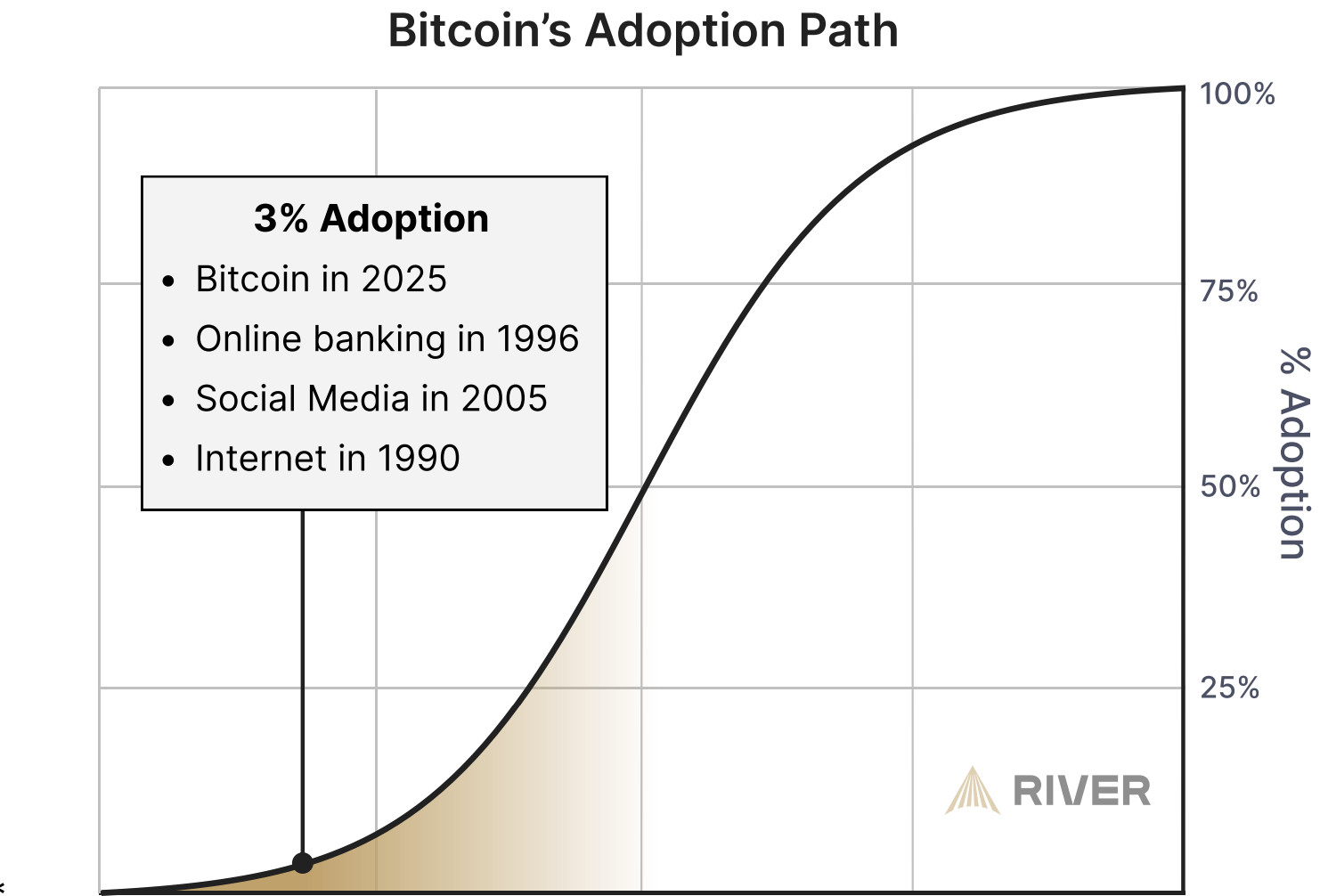Bitcoin Adoption: Still in Its Infancy, but the Future Looks Bright

The Road to Global Bitcoin Adoption
Bitcoin has come a long way since its inception in 2009. Once dismissed as an obscure experiment, it has now cemented itself as a legitimate financial asset. However, despite its remarkable journey, only 4% of the global population currently holds Bitcoin (BTC). In the United States, this number climbs to 14%, making it the country with the highest concentration of Bitcoin ownership. But what does this mean for the future of Bitcoin?
A recent research report by River, a BTC financial services company, sheds light on Bitcoin’s growth globally. According to the findings, Bitcoin is still far from reaching mass adoption, with North America leading the way and Africa lagging behind at just 1.6% ownership.
But here’s the key takeaway:
Bitcoin has only achieved 3% of its total adoption potential—meaning the real journey is just beginning.
 Bitcoin Adoption
Bitcoin Adoption
Bitcoin’s adoption path is still only at 3%. Source: River
Why Is Bitcoin Adoption Still So Low?
If Bitcoin has been around for over a decade, why hasn’t the world fully embraced it yet? The answer lies in several key barriers:
1. Lack of Financial and Technical Literacy
Let’s face it—Bitcoin can be intimidating. Many people don’t understand how it works, leading to misinformation and skepticism. Some still believe it’s a scam or a Ponzi scheme, preventing them from even considering an investment.
2. Volatility: Friend or Foe?
Bitcoin’s price swings are legendary. While traders might love the action, everyday users see instability as a problem. If something can gain (or lose) thousands of dollars in hours, can it really be trusted as a reliable store of value?
This is especially problematic for people in developing economies, where economic stability is fragile. As a result, many have turned to stablecoins, which offer the benefits of digital assets without the wild volatility.
 Bitcoin Adoption
Bitcoin Adoption
A 2023 report from Chainalysis revealed that stablecoins were the most widely transferred digital asset in Latin America. Source: Chainalysis
3. Institutional Hesitation
Bitcoin isn’t just for individuals—corporations, financial institutions, and even governments play a crucial role in mass adoption. However, institutional underallocation remains a barrier. Many large-scale investors still prefer traditional assets, waiting for clearer regulations and reduced risk before going all-in.
The Bright Future Ahead
Despite these challenges, Bitcoin continues to make strides. It recently hit a major milestone by becoming a US government reserve asset, signaling growing institutional confidence.
While mainstream adoption will take time, it’s clear that Bitcoin’s journey is just beginning. With increased financial education, improved stability, and growing institutional trust, we could see adoption rates soar in the coming years.
For now, Bitcoin remains a pioneering asset with enormous untapped potential. The question isn’t if Bitcoin will achieve mass adoption—it’s when.
What do you think? Are we on the brink of a Bitcoin revolution, or is there still a long way to go? Join the conversation!
Related: Bitcoin risks weekly close below $82K on US BTC reserve disappointment

